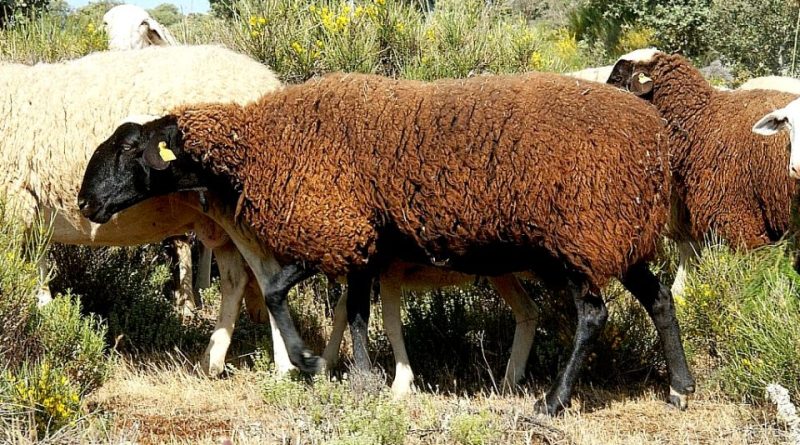Castellana Variedad negra
Castellana Variedad negra
Castellana Variedad negra is a sheep (Ovis aries Linnaeus, 1758) from the Castile-Leon region with a main aptitude for meat production.
Systematics –
From a systematic point of view it belongs to:
Eukaryota Domain,
Kingdom Animalia,
Phylum Chordata,
Mammalia class,
Order Artiodactyla,
Suborder Ruminantia,
Bovidae family,
Caprinae subfamily,
Genus Ovis,
Species O. aries,
Breed Castellana Variedad negra.
Geographic and Area Distribution –
The sheep breed La Castellana Variedad negra is a native Spanish sheep whose geographical distribution is that of the region of Castile and Leon, mainly in Zamora and with fewer heads in Salamanca.
Castile and Leon is a region of north-western Spain consisting mainly of a plateau surrounded by mountains.
Origins and History –
The Castellana Variedad negra is a sheep breed probably coming from the ancestral representative Ovis aries celtibericus.
Its name is linked to the fact that it was formed and exploited for centuries in the region of Castile and Leon and that, years ago, it was called Castilla la Vieja.
Unfortunately, this indigenous Spanish breed is in danger of extinction.
Morphology –
The Castellana Variedad negra is a sheep breed, generally, without horns and with black skin.
It is a rustic sheep, with an attenuated straight or sub-convex profile.
It has small to medium-sized ears that are mobile and lively.
The tail is long, although caudotomy is performed.
The average weight is 65-80 kg for males and 40-60 kg for females.
Productive attitude –
Castellana Variedad negra is subject to a supervised grazing regime. The animals are grouped in herds of variable size, depending on the production orientation. They go out to graze every day, usually with the permanent presence of the shepherd, who is usually the owner of the cattle. Except for special circumstances, the flock spends the night in the fold. The feeding of the animals is mainly based on what is obtained from pasture, integrated with a ration.
In some areas transhumance is practiced.
These sheep are raised for meat production. The most marketed type of product is “suckling lamb” (9-12 kg live weight, slaughtered at 25-30 days of age). “Recental” (16-22 kg live weight) and “pascual” (24 to 30 kg live weight) lambs are also produced.
The milk obtained is intended for the manufacture of cheeses, such as the “Zamorano” Designation of Origin cheese and the Castilian type.
The products named are:
– D.O.P .: “Zamorano cheese”;
– I.G.P .: “Lamb from Castilla y León”.
Guido Bissanti
Sources-
– Wikipedia, the free encyclopedia.
– Daniele Bigi, Alessio Zanon, 2010. Atlas of native breeds. Cattle, horses, sheep and goats, pigs reared in Italy, Edagricole-New Business Media, Bologna.
Photo source:
– https://www.mapa.gob.es/

